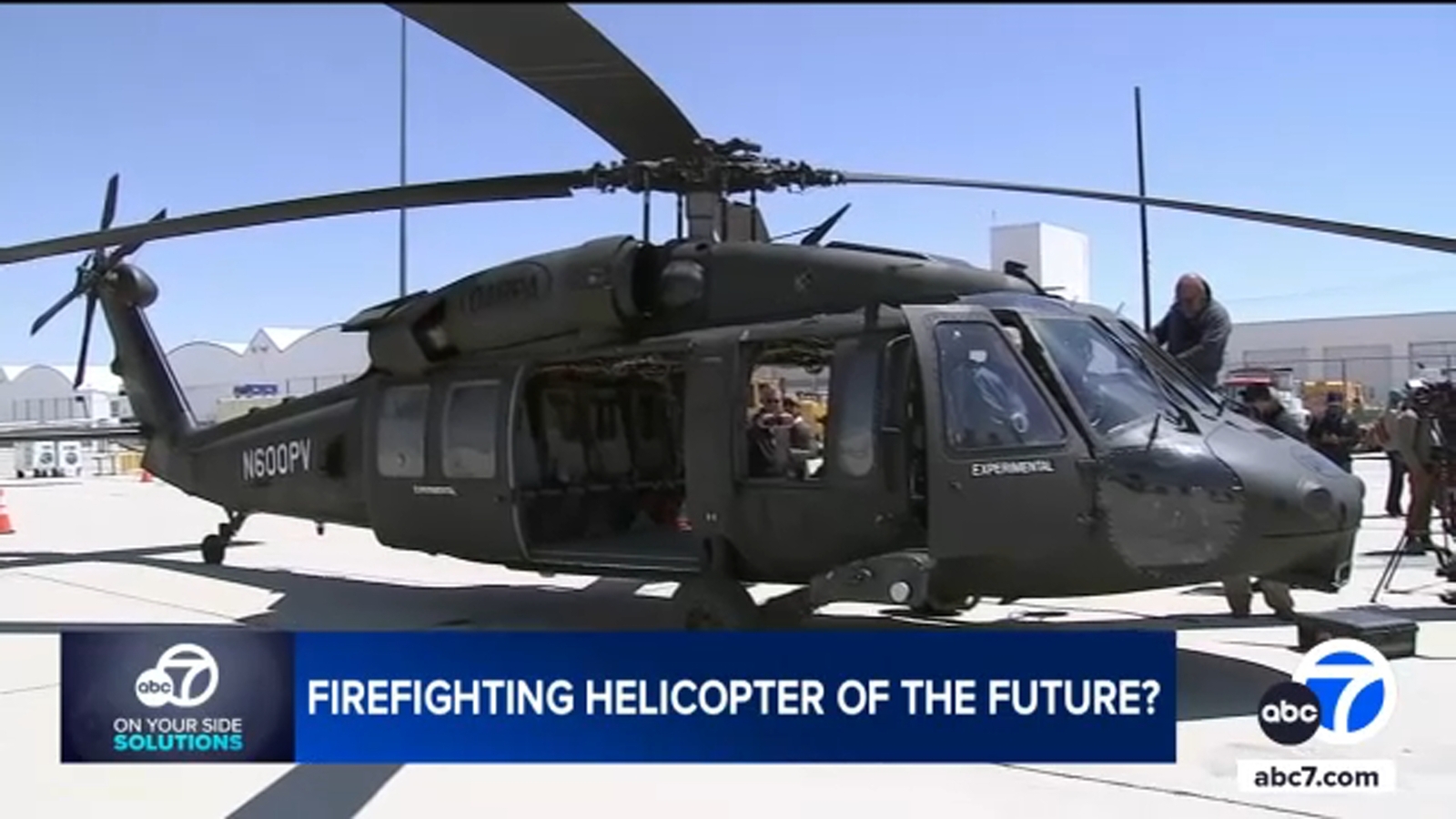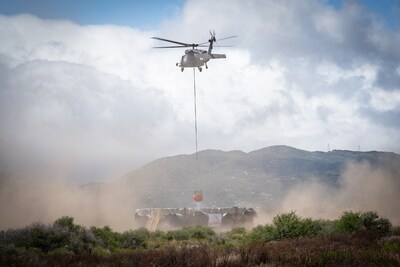Autonomous Firefighting Helicopters: Addressing Safety And Efficiency Challenges

Welcome to your ultimate source for breaking news, trending updates, and in-depth stories from around the world. Whether it's politics, technology, entertainment, sports, or lifestyle, we bring you real-time updates that keep you informed and ahead of the curve.
Our team works tirelessly to ensure you never miss a moment. From the latest developments in global events to the most talked-about topics on social media, our news platform is designed to deliver accurate and timely information, all in one place.
Stay in the know and join thousands of readers who trust us for reliable, up-to-date content. Explore our expertly curated articles and dive deeper into the stories that matter to you. Visit Best Website now and be part of the conversation. Don't miss out on the headlines that shape our world!
Table of Contents
Autonomous Firefighting Helicopters: Addressing Safety and Efficiency Challenges
Wildfires are devastating events, causing billions of dollars in damage and posing significant risks to human life and the environment. The fight against these infernos is constantly evolving, with technological advancements pushing the boundaries of firefighting capabilities. One promising development is the rise of autonomous firefighting helicopters, offering the potential to revolutionize wildfire suppression. However, significant safety and efficiency challenges must be overcome before these unmanned aerial vehicles (UAVs) become commonplace.
The Promise of Autonomous Firefighting
Autonomous firefighting helicopters offer several key advantages over traditional methods. Firstly, they can access dangerous and difficult-to-reach terrain, reducing the risk to human firefighters. Secondly, they can operate continuously for extended periods, providing uninterrupted water drops and fire suppression efforts. Thirdly, they offer the potential for increased efficiency through optimized flight paths and precise water delivery, maximizing the impact of each water drop. Finally, the use of AI and advanced sensors enables real-time monitoring and assessment of the fire's progression, allowing for quicker and more effective strategic responses.
Addressing Safety Concerns: A Critical Imperative
Despite the potential benefits, safety remains a paramount concern. The autonomous nature of these helicopters necessitates robust fail-safe mechanisms. What happens in the event of system malfunctions, GPS failure, or unexpected environmental conditions? These are critical questions that demand thorough answers. Researchers are actively developing advanced redundancy systems, obstacle avoidance technologies, and emergency landing procedures to mitigate these risks. Furthermore, rigorous testing and simulations are essential to ensure the reliability and safety of these systems before widespread deployment. The development of clear regulatory frameworks and safety standards will also be crucial for responsible integration into existing firefighting operations.
Boosting Efficiency: Optimizing Operations
Efficiency is another major challenge. Optimizing water drop strategies, flight paths, and fuel consumption are essential for maximizing the effectiveness of autonomous firefighting helicopters. AI-powered algorithms can play a crucial role here by analyzing real-time data from sensors and cameras to determine the optimal approach and water distribution. Integrating these helicopters with existing fire management systems and communication networks will also be vital for seamless coordination and efficient resource allocation. This requires substantial investment in advanced sensor technology, data analytics capabilities, and robust communication infrastructure.
The Future of Autonomous Firefighting: Collaboration and Innovation
The development of autonomous firefighting helicopters is an ongoing process, requiring collaboration between researchers, engineers, firefighters, and policymakers. Significant advancements in AI, robotics, and sensor technology are needed to overcome the existing challenges. Furthermore, public acceptance and trust in these technologies are crucial for successful implementation. Open communication about the safety measures and benefits of autonomous systems is key to addressing any public concerns.
Looking Ahead:
The potential for autonomous firefighting helicopters to revolutionize wildfire suppression is immense. However, addressing the safety and efficiency challenges is crucial for their successful and responsible integration into firefighting operations. Continued investment in research, development, and testing, coupled with clear regulatory frameworks, will be vital in realizing the full potential of this promising technology and contributing to a safer and more efficient approach to wildfire management. The future of wildfire suppression may well depend on it.

Thank you for visiting our website, your trusted source for the latest updates and in-depth coverage on Autonomous Firefighting Helicopters: Addressing Safety And Efficiency Challenges. We're committed to keeping you informed with timely and accurate information to meet your curiosity and needs.
If you have any questions, suggestions, or feedback, we'd love to hear from you. Your insights are valuable to us and help us improve to serve you better. Feel free to reach out through our contact page.
Don't forget to bookmark our website and check back regularly for the latest headlines and trending topics. See you next time, and thank you for being part of our growing community!
Featured Posts
-
 Orlando Citys U S Open Cup Lineup Predicted Xi And Bench Vs Tampa Bay
May 08, 2025
Orlando Citys U S Open Cup Lineup Predicted Xi And Bench Vs Tampa Bay
May 08, 2025 -
 No Malice Claims Bennett After Hit On Flyers Goalie Stolarz
May 08, 2025
No Malice Claims Bennett After Hit On Flyers Goalie Stolarz
May 08, 2025 -
 Nfl 2025 Power Rankings Analyzing Draft Day Moves And Team Improvements
May 08, 2025
Nfl 2025 Power Rankings Analyzing Draft Day Moves And Team Improvements
May 08, 2025 -
 Pg And E Joins First Autonomous Wildfire Suppression Demonstration In California
May 08, 2025
Pg And E Joins First Autonomous Wildfire Suppression Demonstration In California
May 08, 2025 -
 Maple Leafs Vs Panthers Game 2 Eastern Conference Semifinal Preview And Betting Odds
May 08, 2025
Maple Leafs Vs Panthers Game 2 Eastern Conference Semifinal Preview And Betting Odds
May 08, 2025
